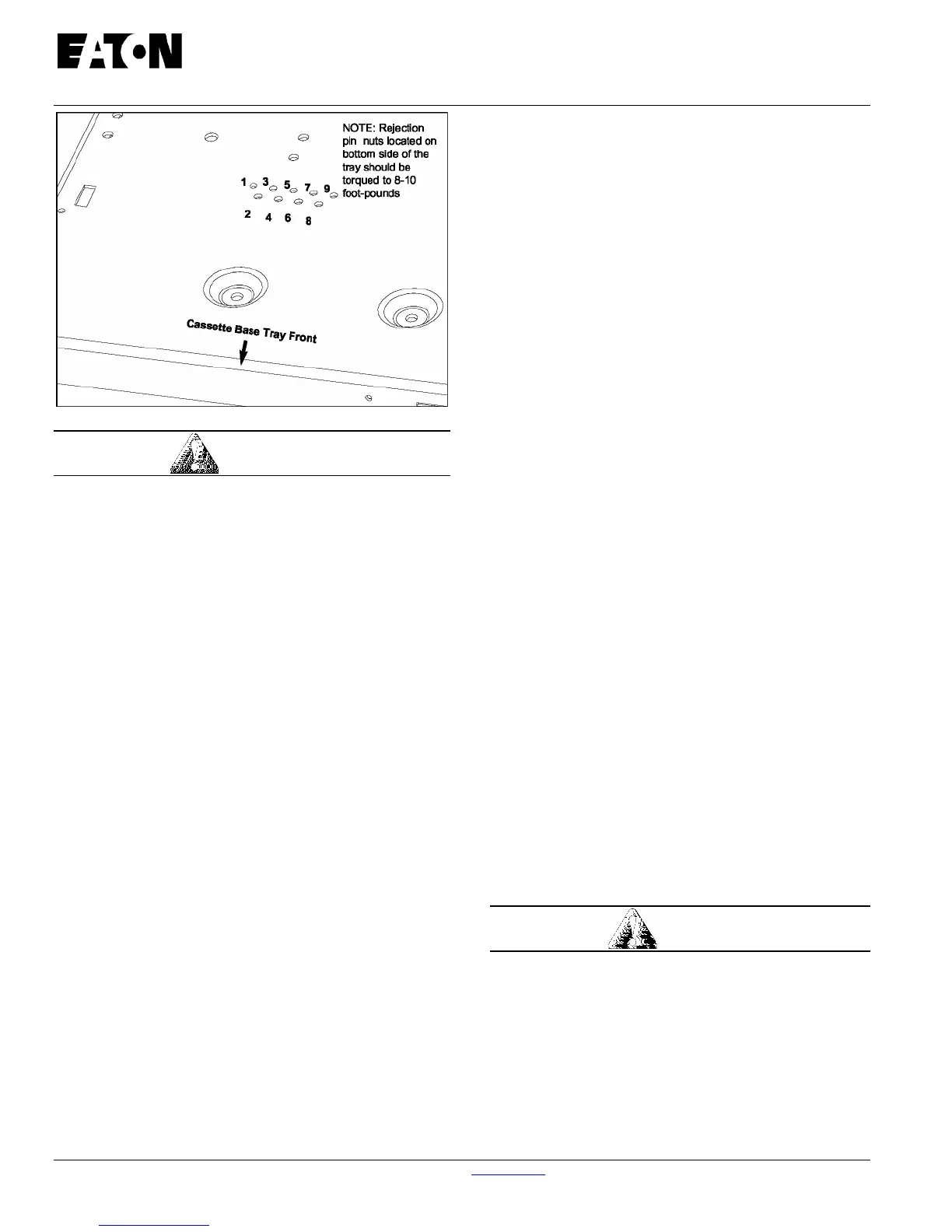Instruction Book
Effective: November 2017 Page 24
For more information visit: www.Eaton.com IB131016EN
Figure 4-3 Cassette Rejection Interlock Pin Positioning
WARNING
NEVER DISABLE OR DEFEAT ANY INTERLOCKS.
HAZARDOUS VOLTAGES WILL CAUSE DEATH,
SEVERE PERSONAL INJURY OR PROPERTY
DAMAGE.
Secondary Control Interlock
This interlock insures that the breaker cannot be levered
into the CONNECTED position if the cassette end
connector of the secondary umbilical cord is not properly
engaged with its cassette mounted connector. This
interlock interfaces with the cradle mounted shoot bolt
interlock which will prevent secondary disconnection with
the breaker connected .
Levering Interlock
The levering crank can only be engaged when the
breaker is open and the horizontal shoot bolts located in
the breaker cradle are properly engaged (fully extended).
The breaker contacts will not close manually or electrically
while the levering crank is engaged. However, the closing
spring may discharge. Shoot bolt details are provided
later.
Anti-Close Interlock
This interlock prevents releasing the closing springs
electrically or manually if the breaker is already closed.
Anti-Latch Interlock
This interlock prevents the breaker contacts from being
closed between the CONNECTED and TEST positions.
However, the closing spring may discharge.
Shutter Drive Interlock
The metallic primary safety shutters are independently
operated permitting them to be locked in the closed
position for safety when the breaker is disconnected or
removed or the open position for servicing the fixed
primary disconnects. The locking system is not
automatically disabled when the breaker is being
connected. Consequently, the lock must be removed
prior to racking or damage to the shutter drive will
result.
Handle Interlock
Prevents racking in or removing a circuit breaker which
is closed.
Hook Interlock
Prevents a circuit breaker which is “racked in” from
being inserted into a cassette. Refer to the CAUTION
below.
4-6.2 CIRCUIT BREAKER POSITIONING
The VCP-T drawout circuit breaker has three normal
positions within the cassette:
DISCONNECT
TEST
CONNECT
In the DISCONNECT position, the circuit breaker is
completely inside the cassette in the forward most
position. The breaker end of the connector of the
secondary umbilical cord is made but the cassette end
of the connector of the umbilical cord is not made. The
shoot bolts cannot be fully engaged. Primary
connections are not made.
In the TEST position, the circuit breaker is also
completely inside the cassette in the forward most
position. In this position, however, the secondary
connections are made on both the breaker end and the
cassette end. The shoot bolts are fully engaged and the
interlock lever must be locked. The Primary connections
are not made.
In the CONNECT position, the circuit breaker is in the
cassette as far as possible. The primary connections are
fully made and secondary connections remain made
and locked in position.
CAUTION
MAKE SURE THE CIRCUIT BREAKER ELEMENT IS IN
THE FULLY RACKED OUT POSITION IN THE
CRADLE BEFORE ANY ATTEMPT IS MADE TO PUT
THE CIRCUIT BREAKER INTO THE CASSETTE.
FAILURE TO DO SO COULD RESULT IN EQUIPMENT
DAMAGE OR BODILY INJURY DURING LIFTING AND
HANDLING. REFER TO PARAGRAPH 4-6.4 FOR
CIRCUIT BREAKER LEVERING DETAILS (FIGURES
4-14 AND 4-15).
